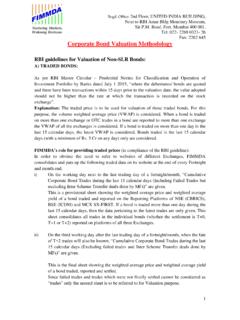Transcription of Application of SMED Methodology- A Case Study …
1 International Journal of Scientific and Research Publications, volume 2, Issue 8, August 2012 1 ISSN 2250-3153 Application of SMED methodology - A Case Study in Small Scale Industry Mr. *, ** * , Department of Mechanical Engineering,, College of Engineering, ,Jaysingpur, Shivaji University,Kolhapur(India) ** , Department of Production Engineering,, KIT s College of Engineering,Kolhapur, Shivaji University,Kolhapur(India) Abstract- Perfection is not attainable. But if we chase perfection, we can catch Excellence.
2 To stand up in todays Globalization world, Manufacturers need to find ways to reduce Production time and cost in order to improve operating performance and Product quality. It is normally possible to greatly reduce the setup times. Fantastic results are possible through better teamwork, good order, Planning and simple modifications. The main objective of this paper to reduce cycle time of a operation by using Single Minute Exchange of Dies (SMED). This Study is carried out in one of the automotive industry.
3 The SMED system proved a track record in many types of industries. The results Shows that the this Study has achieved more than 30% of Cost reduction, 97sec can be reduced which increases the productivity. Single Minute Exchange of Dies (SMED) is the approach to increase output and reduce quality losses Index Terms- SMED, Cycle Time, Internal and External Activity, bottleneck I. INTRODUCTION ue to the intricacy of market order and Competitiveness, many Manufacturing Organizations are unser Pressure to produce and dispatch products in shorter delivery times.
4 In the past a lot of effort has been put to reducing the cycle time and speeding up the output rate whilst totally ignoring the change overtime from one product to another. This has lead to the Economic batch quantity Concept and has resulted in small batches appearing to be Uneconomical to run.[1] Reducing Setup times (Which we rarely Concentrate on) can give the Equivalent of huge increase in process speed (Which we almost and always concentrate on).This is all achieved without detriment to the quality of the Product.
5 The idea of a setup time reduction Plan is move towards SMED (Single Minute Exchange Die) or OTED (one touch Exchange of dies). [1] As shown in the [5] the Three main reasons for setup reduction are:- a) Flexibility:- To be able to respond very quickly to changing market demands,you need to be able to produce small lot sizes in an a economical way. b) Bottleneck Capacities:- Reducing setup times increases the availble capacity,Which can be interesting as an alternatives to buying new equipment or installing an extra shift in situations where the market demand increases.
6 C) Cost Reduction: - Since, especially on bottlenecks,the direct production cost is related to machine performance, an OEE(Overall Equipment Effectiveness) can easily shown the impact of setup reduction. II. SMED Working in any kind of manufacturing environment one of the unfortunate characteristics is waste. Waste can extend from unused raw material to damaged products, and it can carry quite of a financial loss for the company if not treated in an efficient manner. In order to reduce waste, there are several number of methods and strategies that companies can use depending on the desired results.
7 One of the most popular methods is Single Minute Exchange of Die or SMED.[4] SMED was developed by Shigeo Shingo in 1950s Japan in response to the emerging needs of increasingly smaller production lot sizes required to meet the required flexibility for customer demand. The SMED technique is used as an element of Total Productivity Maintenance (TPM) and continuous improvement process [4].It is one of the method of a reducing wastage in a manufacturing Process. The phrase "single minute" does not mean that all changeovers and startups should take only one minute, but that they should take less than 10 minutes (in other words, "single-digit minute").
8 Problem Statement:- The machining production line with 2 VMC s and 2 HMC s handles five variants of the component. Each machine has an operator assigned to it. The cycle time for the bottle-neck operation is 8 minutes. There seems to be enough scope for reducing this cycle time. The output of about 50-55 pcs/shift and 168 pcs/day * 25=4200 pcs/month III. methodology A. Data Collection Statistical data collection methods for measuring machine setup time in assembly line A operation was used in this Study to summaries and describe the data.
9 Production process flow and standard operation procedure are reviewed briefly before setting up the data collection table is done. The next step is to create a data collection table prior to collecting data and the time taken was measured using a stopwatch. Based on the actual production, data was collected and recorded on a daily basis. Subsequently, a statistical bar chart was drawn to monitor and analyse the problems. These methods helps to identify the main contributor to high time loss and help to visualize and better understand the root causes and finding possible solutions to the [6] D International Journal of Scientific and Research Publications, volume 2, Issue 8, August 2012 2 ISSN 2250-3153 B.
10 Application of SMED techniques This Study methodology describes on the project implementation in the battery assembly line by using SMED techniques. The SMED method consists of eight techniques: separate internal from external setup operations; convert internal to external setup; standardise function, not shape; use functional clamps or eliminate fasteners altogether adopt parallel operations; eliminate adjustments and mechanisation. C. Data Analysis The analysis of data and information gathered led to significant improvement carried out in three categories such as mechanical improvement, electrical improvement and organizational improvement.














